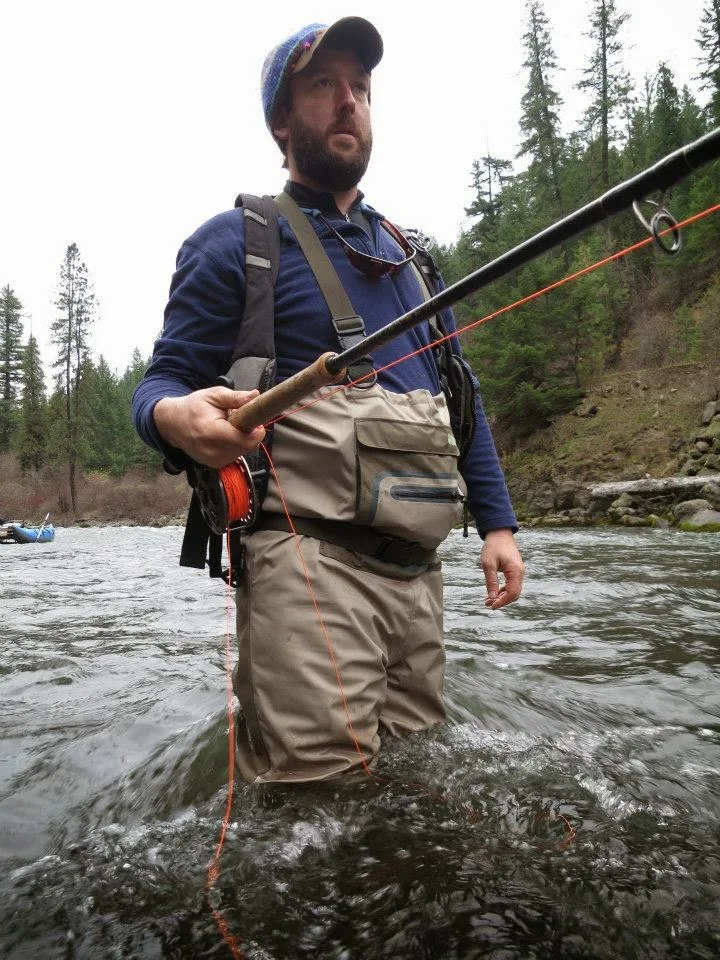Well, Rome is full of Fall Chinook Salmon right now.
I like catching Chinook, not nearly as much as steelhead, but there are incredible amounts of salmon in the rivers right now. The Columbia has had over 200,000 fish through Bonneville Dam the past week, which is more than many of the entire fall runs in the 90s. With record numbers of salmon in the river, it might be a good time to try fishing for them. The Klickitat is going to be stuffed to the brim with Chinook into October, along with most of our other local rivers. The Hood is not open for targeting or retaining salmon as of September 10.
Most people that don’t like catching Chinook dislike it for a couple reasons. First is that they don’t actually fight that hard. They are super strong, but that’s not what I mean. They tend to “dog”, where they put their heads down and try to hold in one spot. Where a steelhead runs and jumps and screams line off your reel, a salmon tends to swim right back to the spot where you just pulled it from. You pull and pull, only to have a fish pull back just as hard. It’s kind of anticlimactic for how big the fish is. The other reason is that you can fish for them all day, watching them roll and not have much, if any success. I don’t mind not catching steelhead all day because it is a mystery whether there are any fish in any given run and I know that if I work the water right, then a steelhead would surely bite my fly if it is there. Salmon let you know that they are there and they aren’t eating your fly.
It is possible can catch them on the swing just like steelhead, but there are a few things that will help you get into them if you really want to take that dive. The difference between steelheading and salmon fishing is vast. In a run full of hundreds of Chinook, you might get one or two to eat a fly. In that same run the rest of the year there may be three or four steelhead in there and you might get one or two to eat a fly. The Chinook roll constantly letting you know of their presence. Seeing a steelhead rolling is pretty rare.
I got my first Fall Chinook of the year in early September. The previous two years, I had swung into a few by the end of August, although the fish seem to be a bit late this year. It was also my first effort of the year in a run I like for salmon this last week. I brought a 13’6” 8wt spey rod, 525 grain Rio Skagit i-Flight intermediate head and an Airflo T-18 FLO tip. Five feet of 16# fluorocarbon and a large, flashy, lead-eye fly in pink and purple finished off my set-up.
When steelheading, I tend to move through a run fairly quickly. Two or three steps between casts and a nice smooth swing . When fishing for Chinook, I take a different approach. I tend to wade out pretty deep in order to keep my fly in the deepest part of the run. I hold my rod way out over the deep water and let the fly dangle and work as slow as possible. Casting straight across the river and then throwing a huge mend into the line lets it sink quite a ways before it comes tight and starts to work its magic. I make at least three casts before taking a very small step if any. If I am absolutely sure that my fly is being presented to fish, I won’t move much at all, but will throw different mends and casts at different angles in order to give the fish different looks at the fly. They are not steelhead, as in many of them will not take a fly no matter what. You just need one player and it can see dozens of casts before it finally attacks. This means that you should work a pod of fish as hard as you can and goes back to the old saying: “never leave fish to find fish”.
Fishing when the sun is off the water is advantageous. I believe this even more so for salmon than steelhead. I just have an hour or so after work to get into them and so far am one for two on evenings swinging for Chinook this year. There are no secret spots either. Expect company during September on the Klickitat. Just find yourself a little piece of water and work it hard. Don’t get frustrated when dozens of salmon are rolling all around you but not taking the fly. Patience and experimenting with your swing will reward you. You don’t need to fish slow deep pools for salmon. One of the runs I like to fish is decently fast and varies from 4-8’ deep. It actually seems like it is too fast to be a good steelhead run. It just has a defined trough where the fish definitely hold between two little rapids.
I have found that when the salmon are rolling, catch rates are fairly low, but at a certain point in the evening, the fish really stop rolling, or at least tone it down quite a bit. I find that when the fish have stopped (or slowed) their rolling, I tend to have the most success soon after. Salmon are known for having a high release mortality, so when I catch one, it is going home with me (where legal). They often fight themselves to the point of exhaustion resulting in death when released.
If you decide to take on Fall Chinook on the fly, it can be a rewarding experience, and hopefully helps you get through the fall when steelheading can get tough.
Andrew
Gorge Fly Shop
























No comments :
Post a Comment